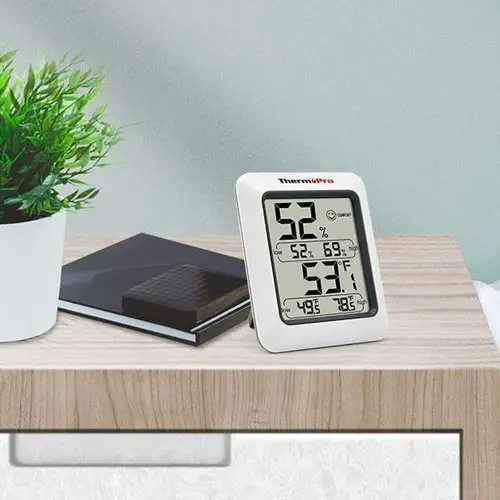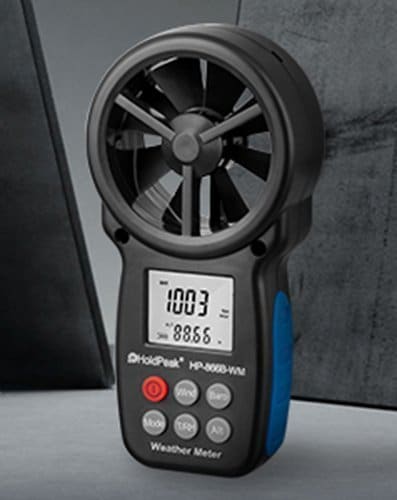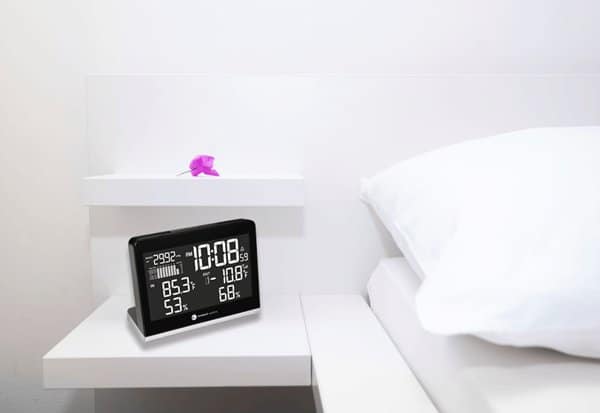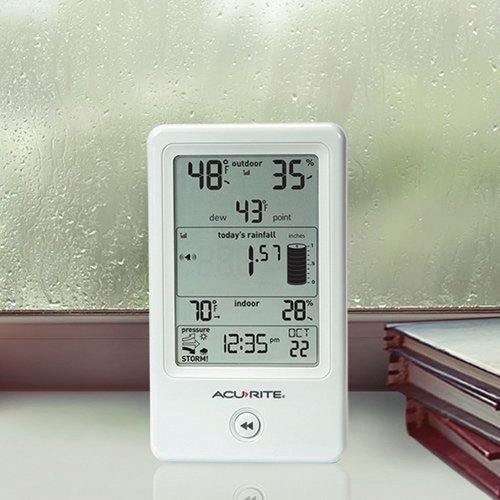After playing with all your personal weather station gadgets and sensors, you’re probably wondering how it all works and what’s going on behind the scenes.
Learning about the mechanics behind weather stations and weather sensors doesn’t have to be hard. In fact, if you love weather, it’s an interesting topic particularly if you love science.
We’re going to break it all down for you and how each weather sensor does its job. We hope you learn everything you ever wanted to know about outdoor weather station sensors.
How the Thermometer Works
The thermometer measures, of course, the temperature. This is the basic sensor that’s included in all weather stations. Both indoor and outdoor temperatures can be measured the same way.
Inside the thermometer, there’s a temperature sensor that collects data on the temperature outside and sends this information to your display or console, these readings help form information about the ambient weather outside.
There are 2 main types of thermometer sensors:
- Thermistors are the most common type of sensor in a weather station thermometer. These types of thermometers are resistant thermometers. The thermistor is made of a cylinder tube of metallic oxides. Inside this cylinder is glass (and sometimes epoxy). When the temperature increases, the resistance inside the cylinder decreases. If the temperature drops, the resistance increases. How the resistance changes is turned into data. That data is sent to your console and evaluated.
- Thermocouples are made with 2 different wires made of 2 different metals. These wires are joined together at one end. This is called the measuring junction. The other end of the wires are used as a reference. When there’s a difference in temperature at both ends, voltage or current output. This data is transmitted to your console in the form of a temperature reading.
How the Hygrometer Works
Hygrometers are devices used to measure humidity. Nobody likes high humidity so it helps to measure it before stepping outside.
A home weather station usually includes a sensor that measures both temperature and humidity.
Moisture in the air is what creates humid temperatures. This moisture makes it hard to breathe and makes you feel gross, in general. Humidity can be measured indoor and outdoor in the same way.
There are 2 main types of hygrometers:
- An analog hygrometer uses a metal strip that’s made into a coil. This coil is bonded to a polymer that absorbs moisture. When moisture is absorbed, the polymer expands. This expansion makes the coil turn. When the coil turns, it moves a needle that measures the amount of humidity in the air. This information is sent to your console.
- A digital hygrometer, electricity is moved through material that absorbs moisture. When there’s high humidity in the air, the material reacts. This changes the electrical property of the material. When this is changed, it evaluates the amount of humidity in the air. Then it transmits that data to your display or console.
How the Anemometer Works
Anemometers measure the speed of wind outside. The more advanced anemometers measure the wind direction as well. Most devices hold up to very high winds and can tolerate extreme weather conditions.
There are 2 main types of anemometer:
- The most common type of anemometer sensors that are included with weather stations uses wind cups to measure the speed of the wind. These wind cups are attached to a vertical pole that sits on the horizontal pole. As the wind blows, the rod spins the wind cups. The anemometer will count how many times the wind cups rotate completely. This number is calculated into the actual wind speed which is normally based on miles per hour. Then the data is sent to your display or console.
- The second type of anemometer uses windmill blades instead of wind cups. This is called a propeller anemometer. Most handheld Anemometers use windmill blades. Instead of counting the rotations of the wind cups, it counts the rotations of the windmill blades. Again, this information is transmitted to your console.
How the Barometer Works
Barometers are used to measure the atmospheric pressure or barometric pressure in the air. High air pressure means that the atmosphere outside will be nice and clear. If it’s dropping, that means a storm may be on its’ way.
There are 2 types of barometers:
- A mercury barometer is the most common. It’s a glass tube with one side open and one side closed. Inside of the glass tube is mercury. The glass tube is placed in a reservoir that’s also full of mercury. The mercury falls to the reservoir causing a vacuum suction. The air pressure moves the mercury around the tube. The height of the mercury is recorded and sent to your console as a reading for barometric pressure.
- Aneroid barometers are safer than mercury barometers. Inside these barometers, there’s a small box with no air on the inside. So, when the air pressure changes, the box either contracts or expands moving a needle that measures that pressure. Once the pressure is measured, your console receives the atmospheric pressure.
How the Rain Gauges Work
Rain gauges are used to measure rainfall or sometimes even snowfall. These come in handy when you want to know whether it’s raining outside or even if you just want to track rain trends where you live.
There are 2 main types of rain gauges:
- A standard rain gauge is a funnel. The funnel catches the rain and the rain falls down into a measuring tube. The rain becomes 10 times magnified by the measuring tube. This allows you to measure the rainfall.
- A self-emptying rain gauge (also known as a tipped cup rain gauge) also uses a funnel. The rain runs down the funnel into a small bucket or cup. Once one of the cups are filled, that’s considered one-hundredth of an inch. As soon as it’s filled, it also tips itself to empty out the rainwater. This tipping creates an electrical mark. This can be turned into the measurement of the rain.
The Bottom Line
Learning about how your weather instruments and sensors work can help you understand what’s happening when you read the weather. It can also help you out if there’s an issue with one of your sensors not working.






